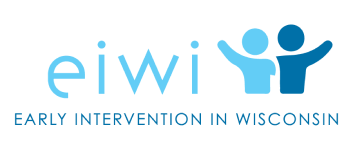Your Questions Answered
Early Intervention Practices
CAN A HYBRID MODEL (A COMBINATION OF VIRTUAL AND IN-PERSON VISITS) BE USED WHEN A PROGRAM HAS LIMITED THERAPY HOURS AVAILABLE DUE TO STAFF SHORTAGES?
Programs are required to provide services in the natural environment. For the Birth to 3 Program, this now includes the allowance of virtual/telehealth services. Programs can explain to a family why the program is recommending/needing to provide virtual services. If staffing is the only reason, then it is important for the program to tell that family how the program is working to address the circumstances resulting in the need to use of telehealth/virtual services. Families must be provided with “prior written notice” (PWN) for any decisions made about services and how they will be delivered. Informed consent is given by signing of the IFSP, which includes PWN documentation.
IS TELEHEALTH “FUNCTIONALLY EQUIVALENT"? WHEN IS IT APPROPRIATE TO USE TELEHEALTH?
A discussion among the team, including the family, needs to occur to determine if services can be provided with functional equivalence (see definition on page 29 of the Operations Guide) via telehealth/virtually. The IFSP team, including the family, will determine if services delivered via telehealth meet the definition of functional equivalence and can effectively meet the child and family’s needs. It is important to remember that a service provided virtually may work for one family or child, however, not be appropriate for another family or child based on the unique needs of the family and child. To determine the effectiveness of services, it is important for teams to evaluate and discuss progress towards IFSP goals and the strategies that have been used; this is particularly important with virtual/telehealth services. If progress is not being made as expected then virtual/telehealth may not be functionally equivalent for that service, strategy, outcome, child, or family.
FOR JOINT VISITS, DOES EACH VISITOR NEED TO COMPLETE THEIR OWN HOME VISIT SUMMARY, OR CAN THEY COMPLETE ONE TOGETHER?
There is no requirement to have multiple notes/home visit summaries. In most cases, the home visit note/summary includes the providers that were present. The note/home visit summary should include information about the strategies worked on with both home visitors when conducting joint visits.
WHAT ARE THE GUIDELINES FOR BRINGING ADAPTIVE EQUIPMENT INTO THE HOME?
RESource shared the IDEA 303.13 section that discusses the responsibilities of Early Interventionists in regard to assistive technology. We discussed issues that providers should consider prior to bringing in adaptive equipment such as whether the family already has something that might work to support the child, and if the equipment can effectively be incorporated into family routines. We referenced Key Principle 1 and the ECTA document that outlines what services in natural environments look like and does not look like in practice. There is also a tip sheet in development to further support this topic in the future.
HAS THE WISCONSIN BIRTH TO 3 PROGRAM ADOPTED A SET OF CORE VALUES?
There is not a current state document that outlines separate core values of the WI Birth to 3 Program. However, The Wisconsin Birth to 3 Program Guiding Principles outlines what we believe to be important as we make decisions and serve the families in our program.
- Children’s optimal development depends on their being viewed first as children and second as children with a problem or disability.
- Children’s greatest resource is their family.
- Parents are partners in any activity that serves their children.
- Just as children are best supported within the context of family, the family is best supported within the context of the community.
- Professionals are most effective when they can work as a team member with parents and others.
- Collaboration is the best way to provide comprehensive services.
- Early intervention enhances the development of children.
In addition to these principles, the Wisconsin Birth to 3 Program also holds true to the 7 Key Principles of Early Intervention. You can learn more by watching our 7 Key Principles Video.
HOW CAN WE EXPLAIN OUR SERVICE DELIVERY TO LEAS AND OTHER PARTNERS?
This can be tricky. We know that we provide services in a way that is best for infants and toddlers, but how do we explain that to others? To help, check out the two resources linked below (and more!) in the early Intervention Practices Category of the EI in WI Resource Library.
Dathan and M’Lisa’s Top 10 Misconceptions About Coaching
Script for Explaining Evidence Based Early Intervention Model
OUR TEAM IS PLANNING TO COMPLETE A BOOK STUDY TOGETHER. ARE THERE DISCUSSION QUESTIONS AVAILABLE?
We are excited to hear that counties want to hold book studies with their teams. RESource is happy to help! We have developed Book Study Bundles in response to requests like this. These bundles are available on EI in WI. The links below will take you to the bundle of your choice:
Coaching Book Study
Teaming Book Study
Pause and Reflect Book Study
What Happened to You Book Study
Evaluation and Assessment
I HAVE QUESTIONS ABOUT SCORING MY ELIGIBILITY TOOL.
We have received several questions about scoring both the DP-4 and the DAYC-2, so we have created the DP-4/DAYC-2 Scoring Guide to answer some specifics! If you have specific questions that are not answered through the scoring guide or would like to have a conversation about a specific scenario, please submit a request for PD/Support.
TO ADD A JOINT VISITOR TO AN IFSP, DOES THAT JOINT VISITOR NEED TO COMPLETE AN ADDITIONAL DISCIPLINE SPECIFIC EVALUATION?
An initial evaluation is completed with the child and family to determine eligibility for the Wisconsin Birth to 3 Program. This means that a child is eligible for the Birth to 3 Program and NOT an individual service or discipline. So, completion of an additional discipline-specific evaluation is not needed to add a service to the IFSP. Please note, insurance providers may require specific assessment information and/or documentation in order to reimburse that service.
WHEN IS IT APPROPRIATE TO RE-EVALUATE A CHILD IF THEY DON'T INITIALLY QUALIFY FOR BIRTH TO 3 PROGRAM?
Many evaluation tools will have guidance included within the manual regarding re-administering the test, so it would be important to check for this. If there is no specific guidance, the general rule is that it is best to wait at least six months to retest or until the child is in the next chronological age group – especially when using norm-referenced charts to obtain standard scores. If the child has not regressed in skills, you might want to anticipate whether current skills would reach the threshold of delay before proceeding with re-administering the evaluation tool. As always, decisions about completing a re-evaluation should be discussed with your team – which includes the parent. Keep in mind, if a child is not found eligible, the service coordinator must offer to rescreen the child within six months – there is no requirement regarding completing a re-evaluation using an evaluation tool. The team may also consider informed clinical opinion – or the use of professional expertise and experience in combination with the assessment to determine eligibility.
WHERE IS IT WRITTEN THAT WE SHOULD ADJUST FOR PREMATURITY WHEN DETERMINING ELIGIBILITY FOR THE BIRTH TO 3 PROGRAM?
With regard to eligibility for the Birth to 3 Program, each evaluation tool will indicate if you are to adjust for prematurity. With the DAYC2, for example, it indicates in the manual that premature children were included in their norm group and that you do not adjust for prematurity for scoring purposes, etc. Other tools will also indicate if you are to adjust for prematurity. Having said that, I am sure you are aware of the diagnosed conditions list and becoming eligible through one of the categories in ‘chart 1.’ Please see page 3 of the Diagnosed Conditions and Atypical Development Guidance for Wisconsin’s Birth to 3 Program document. This shows the level of prematurity needed to qualify for the Birth to 3 Program in Wisconsin.
IFSP Development
MY TEAM WOULD LIKE GUIDANCE AROUND WRITING MEASURABLE IFSP OUTCOMES.
IFSP outcomes are required to be measurable – meaning they should be observable or countable. In the Wisconsin Birth to 3 Program fillable IFSP template, the entirety of the Child/Family Outcome page creates a complete picture of the IFSP outcome including requirements such as criteria (how will the outcome be measured/what is the standard to measure against), procedures (how will we get the child/family there?), timelines (when is the outcome expected to be completed, progress to be assessed, and need for modification to be determined?) For additional support, please see the Instructions for Completing Wisconsin’s Individualized Family Service Plan found in the Forms and Publications tab of the DHS – Birth to 3 Program website. We also strongly encourage you to utilize RESource’s IFSP Outcomes Bundle. Additional resources for IFSP Outcome writing:
ECTA Tool: Enhancing Recognition of High Quality, Functional Outcomes
Quality IFSP Outcomes Quick Reference Guide
Example Participation-Based Outcomes
Leadership
ARE THERE RESOURCES THAT EXPLAIN TO DOCTORS THE REFERRING PROCESS WHEN THE REFERRAL HASN'T COME FROM THEM?
Yes, as part of their First 1,000 Days Outreach Campaign DHS created the following two resources to support county programs in having these conversations:
Wisconsin Birth to 3 Program Conversation Checklist for Health Care Providers
Tips for Birth to 3 Program Referrals
WE ARE STRUGGLING TO FILL AN OPEN POSITION ON OUR TEAM. ANY ADVICE?
We understand that this is an ongoing challenge for some programs. You may find it helpful to talk about this issue with your colleagues at an EI in WI Community of Practice (click here to register). RESource continues to work to connect higher education programs to the Wisconsin Birth to 3 Program. We hope this makes new grads more aware of career opportunities within early intervention. It may be helpful to contact the state professional organizations – WOTA, WPTA, and WSHA. You may also have luck using websites such as Indeed and LinkedIn.
HOW CAN I ORIENT NEW STAFF TO THE BIRTH TO 3 PROGRAM?
EI and WI is here to help! Send your new staff to the New to EI page on this website and ask them to take our 100 Day Journey!
New to Early Intervention
WHAT IS THE BEST WAY TO FIND OPEN POSITIONS WITHIN WISCONSIN'S BIRTH TO 3 PROGRAM?
We would encourage people to use this DHS webpage to access the Administrative Contact or Program Coordinator in the counties that they may be interested in. These people would be a good source of information about job postings at the county level. In addition, each discipline can contact the Wisconsin chapters of their professional organizations (WOTA, APTA Wisconsin, and WSHLA).
OSEP Child Outcomes
DO OUTCOME RATINGS AUTOMATICALLY TRANSFER WHEN A CHILD MOVES FROM ONE COUNTY TO ANOTHER COUNTY?
When a child transfers to another county the exit ratings from the previous county get pulled over and become the entry ratings for the new county. This occurs once the new program has added a file for the child by using the “Search” function in PPS (by searching for the child using the first and last initials and date of birth) and clicking the “Add” button.
IN TERMS OF CHILD OUTCOMES RATINGS, WHEN IS A SCORE OF 8 APPROPRIATE?
There are only a couple places that the use of 8s are mentioned in formal Birth to 3 Program documents. The Program Participation System (PPS) User Guide mentions the use of 8s on pages 22 and 31. In both places, it mentions 8s being used when ratings are not applicable but it doesn’t specify situations that are not applicable. Additionally, the Wisconsin Birth to 3 Program County Determination Results and Compliance Matrix Instructions (see page 2) talks about use of 8s similarly in the data quality section. Here it mentions there being a data error when using 8s for a child that has been enrolled for more than six months and 8s were used. In addition to those resources, the state has been generally discouraging the use of 8s since it tends to lead to data quality errors. This was communicated in the most recent round of Child Outcomes training. 8s were originally intended to serve as a placeholder in PPS to be able to move through the system prior to determining a rating. It was also allowable to use 8s when a child was enrolled in the Wisconsin Birth to 3 Program for less than six months (181 days), therefore eliminating their data from being used for federal reporting for indicator 3. Programs are strongly encouraged to provide a rating of 1-7 for each child at entry and exit (regardless of the amount of service or engagement of the family). The only allowable use of 8 is when a child has been enrolled in the Wisconsin Birth to 3 Program for less than 6 months. Again, the use of 8s is discouraged since this practice tends to lead to data errors. Visit the OSEP Child Outcome Category in the EI in WI Resource Library for more support.
Service Coordination
ARE THERE RESOURCES AVAILABLE TO HELP SERVICE COORDINATORS LEARN MORE ABOUT THE FOSTER CARE SYSTEM?
First, connect with your county’s foster care team – it is helpful to know how things work in your local system. They may also have some great resources! Also, consider visiting the Wisconsin Child Welfare Professional Development System website – there you will find training in many areas related to foster care. This would also be a great topic to bring up at the next Service Coordinator Community of Practice meeting. You can sign up for the next round of CoPs HERE.
IF A FAMILY IS ENROLLED IN BOTH CHILDRENS LONG TERM SUPPORT (CLTS) AND THE BIRTH TO 3 PROGRAM, ARE THEY EXEMPT FROM THE BIRTH TO 3 PROGRAM COST SHARE?
Correct, the county administrative agency may not assess an annual Parental Cost Share for the Birth to 3 Program if the parents have financial liability for other services subject to the Uniform Fee System under Wisconsin Administrative Code DHS 1 provided to the child(ren) in the Birth to 3 Program (i.e. CLTS).
CAN WE BILL FOR TARGETED CASE MANAGEMENT (TCM) AFTER A CHILD TURNS 3?
The Birth to 3 Program is not allowed to bill for TCM time that occurs after the child has left the program, in this case, has turned three. The last day you can bill TCM for through the Birth to 3 Program is the third birthday. There may be other programs that the child can pursue after age three and still get TCM—CLTS, CPS, etc.
Providers are required to comply with Medicaid requirements (Wis. Admin. Code chs DHS 101-108) and Birth to 3 early intervention rules (Wis. Admin. Code ch. DHS 90) when billing for case management services under the Birth to 3 Program.
CAN A CHILD BE ENROLLED IN EARLY INTERVENTION IN 2 DIFFERENT STATES AT THE SAME TIME? FOR EXAMPLE, IF A CHILD’S MOTHER LIVES IN WISCONSIN AND A CHILD’S FATHER LIVES IN MINNESOTA CAN THE CHILD BE ENROLLED IN BOTH STATES?
A child can only be in one state’s Part C early intervention program at a time as each state receives funding based on the number of children enrolled. If a child receives Medicaid/Medical Assistance (MA), the state providing MA would be the state to provide early intervention services. If Wisconsin is the state providing services, we recommend ongoing communication with both “parties” by the Birth to 3 Program.
WHAT HAPPENS IF DIVORCED PARENTS, WHO HAVE 50/50 CUSTODY AND PLACEMENT, DO NOT AGREE ON BIRTH TO 3 SERVICES? ONE WANTS EARLY INTERVENTION SUPPORT AND THE OTHER DOES NOT WANT THEIR CHILD INVOLVED IN BIRTH TO 3.
In these cases, the Birth to 3 Program does not choose sides, programs typically inform the parents that they (the parents) need to determine how to proceed and then let the Birth to 3 Program know. That may mean the parents go back to mediation or to a court for judgment to determine who can legally make the determination for services. However, only one parent’s signature is required for consent. Services would be provided with the signing parent. Please see the IDEA Part C Regulations § 303.7 for more information.
CAN A FAMILY RECEIVE SERVICE COORDINATION ONLY AS AN IFSP PLAN?
UPDATED RESPONSE: Based on the regulations for service coordination services, a family should not only participate in service coordination. According to IDEA Part C federal regulation 303.34(b), service coordinators are responsible for assisting families in obtaining access to needed early intervention services identified on the IFSP and coordinating, facilitating, and monitoring the delivery of services.
It would be highly unlikely that any child’s IFSP would list only service coordination. One example would be a child referred to the Birth to 3 Program within 45 days of turning three and the family only wants support with transitioning to the LEA. Services on the IFSP are a team decision. In all instances the full team would be offered to the family (even if the SC is helping with transition for a child referred within 90 days of turning three).
Even if the “primary coach” is the service coordinator, the child would still be offered the full team (for team meetings) to support the service coordinator when only service coordination might be appropriate. The team may also recommend other team members (not the SC) to do ongoing assessment with the child and family and how often. The team would be used to rate the child at entry and at exit for the child outcomes rating process.
CAN COUNTY PROGRAMS WAIVE A FAMILY'S PARENTAL COST SHARE?
County Birth to 3 Programs are able to modify parental cost share for families. If the county has determined that a family does have a parental cost share, the parental cost share system does allow for a modification per Wis. Admin. Code § DHS 90.06(2)(i)(4), which states that counties are responsible for informing parents of their right to request a waiver of the parental cost share in part or in whole if the request is based on unique circumstances of the child or family. A family may request a modification to their parental cost share if their “ability to pay” is different.
The process of modifying or waiving a family’s parental cost share is a county process. It usually involves a form and input from or sign-off by fiscal staff or leadership in the county. Each county’s Birth to 3 Program should have a policy and procedure in place for how a family can request a modification and the equitable process of approval/denial of requests.
WHEN IS VERBAL CONSENT ALLOWABLE AND WHEN IS WRITTEN CONSENT REQUIRED?
UPDATED RESPONSE: Whenever consent is required by law from the legal guardian, written consent is required. Verbal consent was only allowable during the pandemic; that flexibility ended as of June 2023
DO ELECTRONIC SIGNATURES MEET DHS REQUIREMENTS?
An electronic signature is acceptable to the Birth to 3 Program to conduct our activities. This is referenced in the WI Birth to 3 Program Operations Guide, in section 12.1.2 Consent.
Transition
WHERE SHOULD TRANSITION PLANNING CONFERENCES (TPCS) BE HELD?
There are no legal requirements that tell us where TPCs should be held. The guidance does say that the Birth to 3 Program is responsible for scheduling the TPC and that the location should be convenient for the family. For more information about Transition Planning Conferences, take a look at the Interactive Transition ToolKit.
CAN THE BIRTH TO 3 PROGRAM PROVIDE THE LEA WITH AN ESTIMATE OF THE NUMBER OF KIDS THAT WILL TRANSITION TO THE SCHOOL DISTRICT?
The LEA notification process provides LEAs with an estimated number of children to expect. Please reference the WI Birth to 3 Program Operations Guide; particularly Chapter 11 on Transition (11.2.1 and 11.2.2 on page 85)



